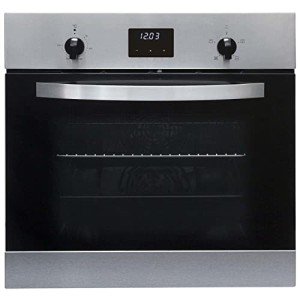Understanding Hobs and Ovens: The Essential Kitchen Appliances
In the world of kitchen devices, few items are as essential as hobs and ovens. These appliances form the foundation of cooking activities, making it possible for people to produce whatever from easy meals to elaborate feasts. Understanding the differences, types, and functionalities of hobs and ovens can significantly enhance one's cooking experience. This short article delves into the intricacies of hobs and ovens, providing insights that deal with both beginner and seasoned cooks.
What Is a Hob?
A hob, frequently described as a cooktop or range top, is the flat surface area on which pots and pans are positioned for cooking. Hobs are geared up with heating elements that produce the needed heat for cooking food. They can be found in different kinds, including gas, electric, induction, and ceramic options. Each type offers special advantages and drawbacks.
Types of Hobs
Gas Hobs:
- Heat Source: Natural gas or lp.
- Advantages: Instant heat control and responsiveness, preferred by many chefs for exact cooking.
- Drawbacks: Requires a gas connection and can be less energy-efficient.
Electric Hobs:
- Heat Source: Electric coils or smooth glass-ceramic surfaces.
- Advantages: Generally simpler to clean up, even heating, and extensively available.
- Drawbacks: Slower to warm up and cool down compared to gas.
Induction Hobs:
- Heat Source: Electromagnetic currents.
- Benefits: Quick heating, energy-efficient, and only warms the pots and pans, not the surrounding surface area.
- Downsides: Requires compatible cookware (ferrous materials).
Ceramic Hobs:
- Heat Source: Electric and has a smooth glass surface.
- Advantages: Sleek look, easy to clean, and even heating.
- Downsides: Can take longer to warm up and cool off.
What Is an Oven?
An oven is an enclosed home appliance that cooks food by surrounding it with dry heat. Ovens can be standalone units or combined with hobs in a single appliance understood as a range. Ovens are versatile tools that can be used for baking, roasting, broiling, and more.
Kinds of Ovens
Conventional Ovens:
- Heat Source: Electric or gas.
- Advantages: Good for conventional baking and roasting.
- Disadvantages: Can have unequal heat circulation.
Convection Ovens:
- Heat Source: Electric or gas with a fan for distributing air.
- Advantages: More even cooking and much faster cooking times due to air flow.
- Drawbacks: Can be costlier and might require modifications in cooking times.
Microwave Ovens:
- Heat Source: Microwaves.
- Benefits: Quick cooking and reheating; fantastic for defrosting.
- Disadvantages: Can not brown or crisp food well.
Steam Ovens:
- Heat Source: Steam generation.
- Advantages: Retains nutrients and moisture in food, healthier cooking option.
- Drawbacks: Longer cooking times and usually higher cost.
Secret Differences Between Hobs and Ovens
While hobs and ovens serve the main purpose of cooking food, their performances and utilizes differ significantly. The following table sums up these essential distinctions:
| Feature | Hob | Oven |
|---|---|---|
| Cooking Method | Direct heat | Confined heat |
| Primary Use | Boiling, sautéing, frying | Baking, roasting |
| Heat Source | Gas, electric, induction | Gas, electric, steam |
| Cooking Area | Flat surface | Enclosed space |
| Cooking Time | Generally quicker | Varies based upon meal |
| Control & & Precision | Immediate and direct | Depend on settings and timers |
Advantages of Using Hobs and Ovens Together
Combining the use of a hob and an oven can greatly boost the cooking process. Here are some advantages:
- Versatility: Different kinds of food can be prepared simultaneously.
- Performance: Using both enables numerous cooking strategies, such as searing on the hob and baking in the oven.
- Time-Saving: Multi-tasking can considerably decrease overall cooking time.
Upkeep and Care
To guarantee the longevity of hobs and ovens, routine maintenance is essential. Here are some pointers:
For Hobs:
- Clean spills right away to avoid staining.
- Use proper cleaners for particular products (e.g., ceramic cleaner for glass-ceramic hobs).
- Regularly inspect gas connections for leakages (for gas hobs).
For Ovens:
- Wipe down the interior after each usage to prevent build-up.
- Usage self-cleaning features if offered, or apply oven cleaners for hard stains.
- Regularly inspect seals and gaskets for wear and tear (to keep heat performance).
Frequently asked questions About Hobs and Ovens
1. What is the very best type of hob for a novice cook?
Answer: A ceramic or electric hob is often suggested for novices due to ease of usage and cleaning.
2. Can I use any cookware on an induction hob?
Answer: No, induction hobs need cookware made from magnetic products (e.g., cast iron or stainless-steel).
3. How frequently should I clean my oven?
Response: It is recommended to clean your oven every couple of months, or more often if you use it typically.
4. Is it better to bake in a convection oven?
Answer: Yes, stoves are often better for baking as they supply even heat circulation. Nevertheless, www.ovensandhobs.uk might benefit from conventional ovens.
Comprehending the performance and differences between hobs and ovens is necessary for any cooking lover. Whether one prefers the instant heat of a gas hob or the accuracy of an induction cooktop, each type offers unique advantages. Similarly, ovens differ extensively in function, from standard baking to steam cooking. By appreciating these home appliances' roles in food preparation, cooks can boost their culinary abilities and enhance their kitchen activities.

